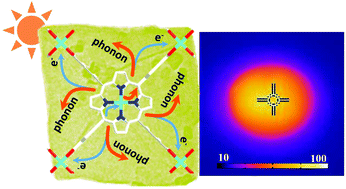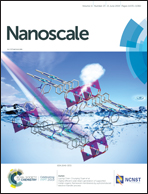Highly efficient solar steam generation of supported metal–organic framework membranes by a photoinduced electron transfer process†
Abstract
Porphyrin-based molecules possess excellent photophysical properties and are widely applied in photothermal fields. Nonetheless, these molecules featuring small cross sections of optical absorption and high radiative recombination rates lead to inferior performance of photothermal conversion. Herein, porphyrin paddle-wheel framework-3 (PPF-3) composed of tetrakis (4-carboxyphenyl) porphyrin (TCPP) and Co2+ was utilized to study the possibility of the enhanced photothermal effect induced by a photoinduced electron transfer (PET) process. Finally, the supported PPF-3 membrane exhibited comparable solar steam generation performance to a supported membrane of Au nanoparticles. The solar thermal receiver efficiency of the supported PPF-3 membrane was increased to 70.3% which was ∼420% higher than that of the supported TCPP membrane. The enhanced performance benefits from the PPF-3 structure and components that enable the broadening of the optical absorption range and suppress the radiative recombination of excitons by PET from the lowest unoccupied molecular orbital (LUMO) of TCPP to cobalt ions. Based on the ubiquitous structures of metal–organic frameworks (MOFs), the research opens a new avenue for the applications of MOFs as cost-efficient and eligible photothermal materials.



 Please wait while we load your content...
Please wait while we load your content...